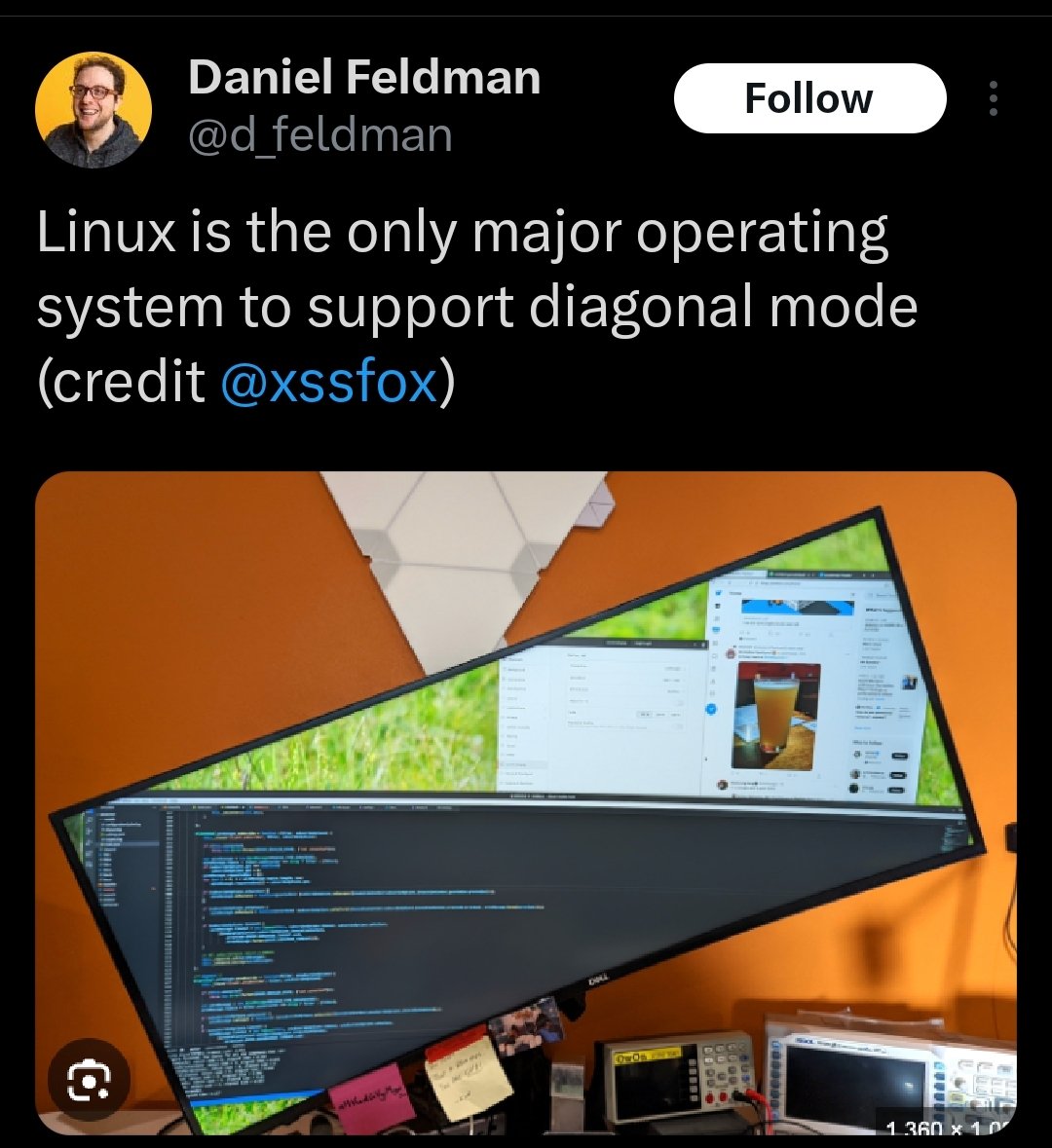Lemmy.one shut down so I wouldn't use that one anymore
Zangoose
Didn't know it only applied to UWP apps on Windows. That does seem like a pretty big problem then.
I don't still have a Mac readily available to test with but afaik it is any application that uses Apple's packaging format. It could also be that it needs to be in the "Applications" folder, but I'm almost certain it isn't an App Store exclusive feature.
I mentioned Linux specifically because something like this is the hardest to set up on Linux. I (wrongly) assumed that since you were complaining about it not existing, you were on a platform where setting these permissions up isn't straightforward. App-specific file-acess permissions are on MacOS out of the box as a configurable setting for all applications (in the system settings menu), and I'm pretty sure Windows 10/11 has something similar in its settings menu as well.
Edit: Also, if we're being pedantic, this is also a setting on both Android and iOS, with Android displaying the option to change access pretty much every time you pick out a file.
Not sure what platform you're on but on Linux flatpak can limit access to files, and things like AppArmor can do that for any native app as well (though it can be pretty tedious to configure)
I think the problem is that the Matrix Foundation (non-profit org) is being slowly cannibalized by Element (for-profit, VC-funded) which ends up making their costs and profit expectations a lot higher.
Right now this is only impacting the matrix.org homeserver. However, this could eventually end up impacting protocol-level design choices that harm other instances as well. Sure, you could fork the protocol and clients, but now we're talking about taking up the work that an entire organization had previously been doing. Not impossible if an existing organization like the FSF or Linux Foundation started backing something, but not a great place to be in either.
Edit: grammar
Reminder: Most devs actually care about the things they make. This is a management/timeline problem, not a developer one.
I don't think I used it until chapter 9. To me it's useful for harder-difficulty levels like ch. 9 and modded levels where you don't really get any time mid-level to stop and think about where you need to go next. For those levels the telescope helps out a lot
The ghost doesn't get a gravestone
This works, thanks!
I don't think it's a process ID? I have 2 virtual pipewire devices (one called "chat-mic" and one called "chat-speaker"). Pipewire devices (nodes) also have ID numbers, but they are assigned when the device is initialized on startup and aren't guaranteed to be the same between reboots





Multimc is abandoned afaik - Prism is the actively maintained fork now
(MultiMC still works fine I think for vanilla but it's a pain for managing fabric mods compared to prism)